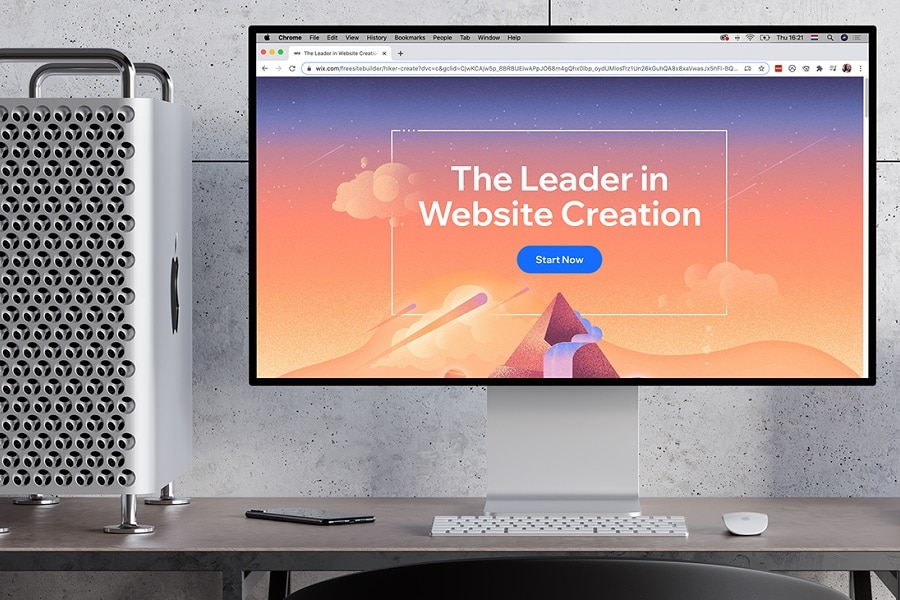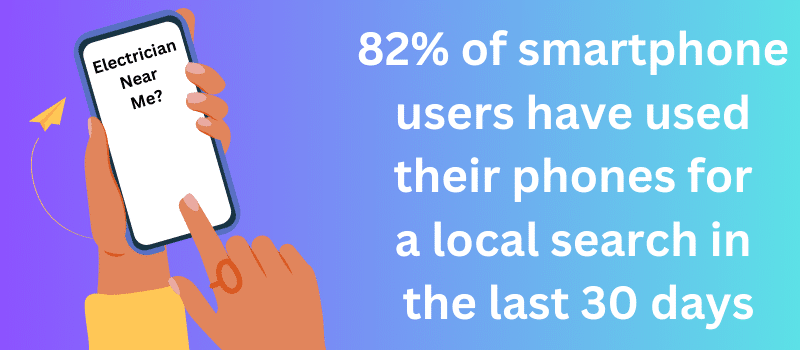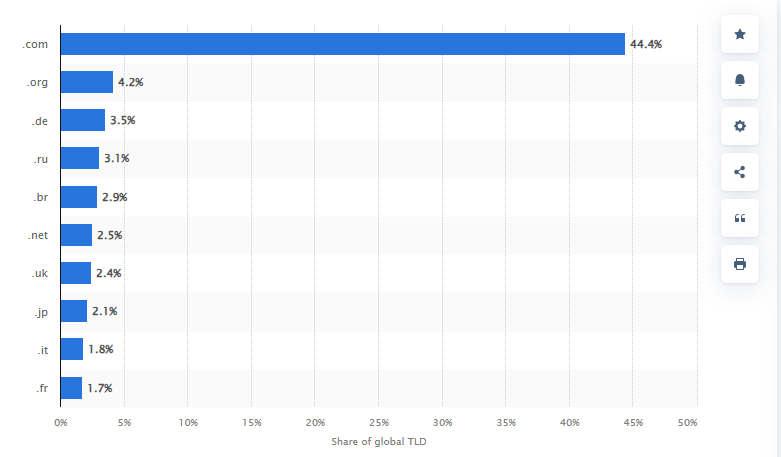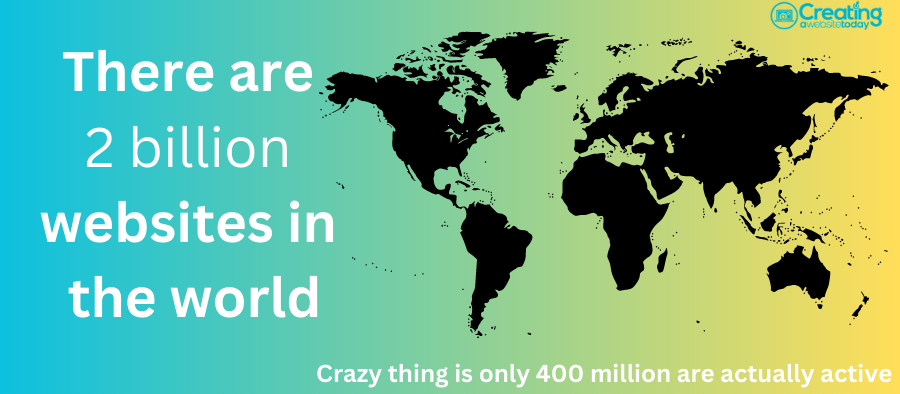My content is reader-supported by awesome people like you. Which means I could earn a commission. Learn more here!
It’s no secret that websites are an essential part of any business.
If you want to succeed in the digital age, you need to have a website that’s easy to use and looks professional.
But how do you know whether your website is good enough?
Are there statistics about how many people are using the internet?
Do people actually read my site?
Is it even worth having one at all if nobody is using it?
I’m here to help answer these questions by giving some simple facts and statistics about websites:
Some quick website facts (in case you need data fast to source)
- 65% of business websites have a blog on their site
- For a website, the desktop conversion rate is 3.99%, and for mobile is 1.22%
- 61 of US website traffic comes from mobile devices
- Your users will spend 88% more time browsing if there is a video content
- If you offer an online deal on your website 62% of consumers tend to share these with friends
- Around 70% of your website traffic will come from Google (Not sure if you have heard of it 😉 )
- About 35% of small businesses feel their business is too small to have a website
- The first website was created in 1991 by Tim Berners-Lee.
- The average person spends over 2 hours per day on the Internet.
- The most popular content on websites is text, followed by images, videos, and audio.
- The most popular website in the world is Google with 92.6% of the global market share
- The most popular website hosting platforms are WordPress, Wix, and Shopify. (Source: BuiltWith)
- Most popular website languages: English, Chinese, Spanish, and Japanese are the most popular website languages. (Source: W3Schools)
Most popular top-level domains worldwide in 2024
The data doesn’t surprise me with .com leading the way at 44.4% followed by .org at 4.2%
There are about 2 billion websites
The crazy thing is less than 400 million are actually active
This a key reminder to make sure you are staying up to date on your website
Total number of website visits of artificial intelligence (AI) tools in 2023
I’m not surprised at all with the number one AI tool websites being visited.
But you have a few other riders on here too!
94% of website first impressions are design-related

The design of a website can easily capture someone’s first visit.
Afterall:
Every visitor to your site is a potential lead for your business.
Let’s check out a few more design facts:
- ESPN.com profits increased 35% after incorporating suggestions into their homepage redesign
- After Times.com adopted continuous scroll their bounce rate dropped 15 percent
- Judgments of website credibility are 75% based on the website’s overall design
80% of website viewer’s time is spent looking at the left half of your page
Neilsen Norman found out that most fixations fall in the left half of the screen.

Websites are the first place people go to find out about your business.
Your website is the first place people will go to find out about your business.
It’s not as simple as just having a website, though–your site needs to be optimized for search engines and mobile-friendly so that it can rank high on Google.
If you don’t have a website at all, people will find out about you through other means like social media or word of mouth (which is not only less effective but also more expensive).
Around 27% of small businesses don’t have a website
A website is still a large learning curve that some businesses don’t venture down right away.
Also, some just don’t know where to start or really think about it.
On top of that the average cost for a website can range from $1,000 to $10,000 which I feel could shy companies away from starting one.
Especially if you’re company is just getting started.
Just to add as a small business in a local area you’re probably looking under 3K most likely on a simple design.
It can get even cheaper now with easy option with AI built in.
73% of small businesses have their own website
There is a reason for this.
Having a site plays into some key stats on growing business which is important.
74% of people who search for local businesses use an internet search engine.
This is the most popular way to find a business, but it’s not the only one.
Some people may use mobile apps like Yelp or Google Maps to help them find local businesses they can visit in person.
Other potential sources include social media sites like Facebook, Instagram, and Twitter;
email newsletters sent by local chambers of commerce; phone directories such as Yellow Pages;
or even word-of-mouth recommendations from friends and family members who live in your area.
82% of smartphone users have used their phone for a local search in the last 30 days, vs. only 66% who have used a computer.

Mobile search is growing.
In fact, it’s growing at a faster rate than desktop search.
Mobile search is more local than a desktop too!!
A recent study found that 82% of smartphone users have used their phone for a local search in the last 30 days, vs only 66% who have used a computer.
This means that if you’re not optimizing your business’ website for mobile devices (and most businesses aren’t), you could be missing out on potential customers who are looking for nearby businesses like yours!
Also:
Mobile searches are easier than desktop ones because they include location information right there where we need it–in our hands!
No need to copy/paste addresses into an app or type long strings of text into boxes;
all we need is our thumbs!
And finally:
Mobile searches are convenient because they allow us all kinds of freedom as consumers–the freedom not just to explore new places but also access information about them instantly when we want it.”
39% of people will stop engaging with a site if it takes too long to load
This is a very important stat and Google even assists you with this when you run it through their Google Page Speed helper
Which I highly recommend.
Many factors can play into this but nothing is more important than providing the perfect website experience.
60% of consumers say they’re more likely to contact a local business after getting a positive experience from its website.
The first thing you will want to do is set up a website.
This will allow customers to learn more about your business and the products or services that you offer, as well as provide them with an opportunity to get in contact with you.
It’s important that the customer experience is positive for both parties:
if it’s not, then there’s no point in having a website at all!
Customers need to feel like they can trust you as an organization and trust what information they’re reading on your site because if they don’t feel comfortable using it then there won’t be any conversions (or sales).
67% of customers look at competitors’ websites before purchasing and 66% look up customer reviews on websites before buying.

The fact that customers check out competitors’ websites before purchasing is no surprise.
As consumers, we want to get the best value for our money and are always on the lookout for information that helps us make informed decisions.
A lot of people will also look up customer reviews on a product’s website before buying it.
If there are any issues with the product or company, they will be exposed in these reviews–so it’s important that your business has a good reputation if you want people to come back!
68% of customers prefer to buy from companies that offer online chat or live chat.
You’ve probably heard that customers prefer to buy from companies that offer online chat or live chat.
Well, it’s true!
Online chat allows your customers to get help immediately by simply clicking a button on your website.
They don’t have to wait on hold or email you back later; they can just click and start talking right away.
And if they need more information about something, they can search through your site while chatting with an agent so they don’t have any dead air time during their call.
This reduces frustration levels and makes the customer experience more enjoyable overall–which means higher conversions as well!
84% of consumers like to use mobile devices to interact with brands via mobile apps, call centers, or a live chat feature.
Mobile phones are more convenient for people to use, and they’re also more personal than traditional computers.
People like using mobile devices because they can be used anywhere and at any time.
This makes it easy for them to interact with brands whenever they want–not just during business hours or when their desktop computer is turned on.
Businesses need to be able to interact with customers on their terms if they want them as repeat customers and brand advocates.
This means having a website that allows people access from any device, including smartphones and tablets;
it also means providing ways in which customers can contact you:
an email address or phone number on every page of your site; links from social media profiles (and vice versa);
customer service chatbots that respond within seconds rather than minutes or hours!
44% of B2B buyers will abandon a small business website with no contact info
This one was pretty mind-blowing to me.
I get they have to have a way to contact you in general.
But:
This shows the importance of having an actual contact page on your website.
You have 50 milliseconds to make a Google first impression

Oof:
I’d love a few seconds more to make that good first impression.
But:
This is all we get according to t and f online
FAQ On Website Facts
What's one of the key negative feedbacks of a website?
94% of negative website feedback relates to design.
Are consumer reviews important for a website?
72% of consumers trust customer reviews.
Are chatbots important for a website?
Since 2019 chatbot use has gone up by 92%.
Conclusion On Website Statistics & Facts
In conclusion, it’s important to remember that the internet is a powerful tool.
If you want your business to succeed, then it needs to be available online.
The statistics we’ve listed above show just how much influence websites have over consumers’ buying decisions and their overall perception of a company.
With so many people using smartphones (which make up 68% of total mobile phone usage), there has never been an easier time for entrepreneurs who want their businesses on the web!
Sources
- SEO Expert Brad
- Chat Meter
- Results Drive SEO
- The Manifest
- Small Business Trends
- Net MarketShare
- Think With Google
- Taylor & Francis Online
- Web FX









Leave a Reply